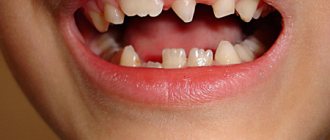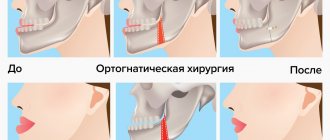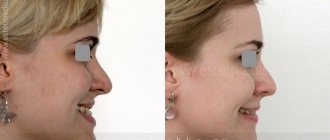The alveolar process is what holds the teeth in our mouth. Leading a healthy lifestyle and taking proper care of your teeth has a positive effect on their longevity. If the situation is neglected, the teeth will quickly become unusable, and in the worst case, they will fall out. If there are still several such “dropouts”, you can come to terms with this. But sometimes situations arise when you have to look for a replacement and install artificial substitutes.
An operation called dental bone grafting or osteoplasty is a natural procedure in cases where dentists need to install an implant in the patient’s mouth. Using modern technology, experienced doctors build up tissue, resulting in a place suitable for installing an artificial tooth. Without this event, it is often simply impossible to carry out implantation, since the person’s jaw may not have the appropriate size base for installing the tooth.
Is it possible to do without bone grafting?
Sometimes dental clinics recommend that their patients replace bone grafting surgery with some other measures. Among them:
- Installation of long root-shaped implants bypassing the maxillary sinuses;
- Installation of compression-type implants into deep layers of tissue;
- Carrying out full jaw implantation.
The last option is suitable for those patients who have started the problem and have lost most (or all) of their teeth. However, the choice of procedure still remains on the person’s conscience, taking into account personal needs, body characteristics and financial capabilities.
Possible complications of osteoplasty
Bone augmentation is a safe procedure in modern dentistry. With proper treatment and compliance with all recommendations, unpleasant consequences are excluded. Immediately after surgery, swelling and pain may occur in the intervention area. Normally, the discomfort goes away after 3-4 days.
In rare cases, if personal hygiene rules are not observed after the sinus lift procedure, sinusitis or periodontitis may develop. And with the immediate installation of an implant due to excessive load, there is a risk of its displacement.
Why is there a need for bone grafting?
Osteoplasty (bone grafting during implantation) is a fairly common type of work in dental clinics, since 70% of patients visiting doctors experience atrophy of the facial bones. There are quite a lot of nerves and vessels in the human jaw, and the alveolar processes are not constant. Accordingly, each clinic visitor has his own individual characteristics of the behavior of the masticatory apparatus, various recommendations and consequences of tooth extraction. Bone grafting allows you to minimize the risks of complications in the case of major surgery.
When a person’s tooth is removed and an implant is not placed in its place immediately, the jaw tissue under the removed process begins to atrophy. The lack of pressure on it leads to the fact that the alveolar processes cease to be in good shape due to the chewing effect. Accordingly, the current shape of this section of the jaw is transformed, losing its original features.
As for the rate of bone tissue resorption, it differs for the upper and lower parts of the jaw. In the first case, the process begins within 2–3 months, while the lower jaw atrophies 2 times longer. Therefore, when visiting a dentist after just a few months, the patient is forced to change the parameters of the jaw bone so that the implantation takes place without unnecessary problems.
Sign up for a consultation
Is it possible to avoid bone growth?
When implanting one unit, plastic surgery is indispensable. Only in the case of complete absence of teeth, implants of various shapes and sizes are used as an alternative, onto which a complete fixed denture is attached.
The modern All-on-4 (or “All on 4”) technique allows for prosthetics without surgery to increase the volume of bone tissue. In this case, the temporary prosthesis is fixed on 4 implants installed in a certain way. Two implants are placed in the front part of the jaw, two more - on the sides at an angle of 45 degrees. Thus, the area of contact between the implant and the bone increases.
What materials are used when performing bone grafting during implantation?
As a rule, not a single similar event is carried out without the use of modern dental equipment and specific materials. The latter include:
- Porous membranes;
- Bone blocks;
- Various granules containing synthetic or natural substances.
The bone material used when performing plastic surgery during implantation is most often used in the following options:
- Xenogeneic – blocks and membranes that are of natural animal origin.
- Autogenous - a borrowed piece of bone, extracted for installation from the patient himself.
- Alloplastic is a synthetic material based on calcium phosphate.
- Allogenic – bone material from another person, obtained with the consent of the latter or after his death.
The latter option is advantageous, as it saves the patient from the need to sacrifice his own bone tissue. Allogeneic materials can be kept for long periods of time in special jars under the appropriate supervision of experienced medical professionals.
Sign up
Characteristics of osteoplastic material in dentistry
Osteoplastic materials in surgical dentistry must be of high quality and have the following characteristics:
- safety for human health (the use of artificial bone tissue that can harm the body is prohibited);
- high efficiency;
- porosity (ensures the germination of new bone tissue);
- full compatibility with the tissues into which the materials will be implanted;
- ridding the bone tissue of the defect by filling it.
Currently, there are many types of osteoplastic materials on the market. When choosing the most suitable material, all the above characteristics must be taken into account. In addition, it must be ready for immediate use and have high adhesion rates so that the implant can adhere to the bone as closely as possible.
What is important before the operation?
Before undergoing bone grafting, you need to consult with your doctor and find out a few important points. The surgeon who will perform the operation must perform several sequential actions:
- Analyze and remove sources of dental infection, if any;
- Normalize mineral metabolism;
- Cure completely or cause remission of some complex diseases (for example, hypothyroidism, hyperthyroidism, etc.).
Each situation is individual; make sure that the doctor is completely confident that dental bone grafting will not harm your health.
What is the cost of gum augmentation?
The price of bone grafting depends on the method of surgery and the type of material used, so the cost of treatment is calculated on an individual basis.
The quality and quantity of bone material plays a huge role in pricing. Clinical experience from previous years shows that only the use of high-quality and purified osteoplast with improved biocompatibility reduces the risk of an inflammatory reaction and increases the efficiency of osseointegration.
Carefully choose a clinic and specialist when planning treatment. A qualified doctor is half the success and a guarantee of quality results.
What types of bone grafting are there?
In practice, dentists use 4 main types of CP:
Block transplantation
This method is the only possible option in the case when dentistry does not have free bone blocks available for transplantation. Then a sample is taken from the patient himself, who is forced to give away a part from the lower or upper jaw, bone from the cusps of wisdom teeth or other places.
The bone material is installed on special titanium screws and covered with a resorbable membrane. In this condition, the bone tissue is located under the gum flap and becomes the basis for further work with implants. The healing process can take from 6 to 12 months, so with this approach there can be no talk of subsequent implantation immediately after block transplantation.
Splitting of the alveolar process
The operation consists of several stages:
- cutting bone tissue using a dental cutter;
- expansion of the resulting hole;
- installation of root-shaped implants;
- introducing filler into the remaining space;
- membrane covering;
- stitching the flap.
The advantage of this technique is the ability to immediately install dental implants. The procedure does not require taking bone tissue from the patient or using a block borrowed from another person.
Sinus lift
This operation is performed on the upper jaw by installing several implants near the maxillary sinuses. It uses a synthetic bone substitute, which allows you to immediately begin installing implants.
Guided bone regeneration
If the bone tissue is slightly atrophied, directed bone regeneration comes to the rescue. To do this, the doctor cuts the gum and uses replacement material, which is placed at the site of the future location of the implants. Next, the membrane is applied and the incision is stitched. There is no need to transplant a bone block; artificial teeth can be installed immediately after completion of the GBR.
Guided bone regeneration (GBR) surgery – vertical and horizontal bone augmentation
Bone atrophy is a fairly common pathology among dental patients. It occurs for various reasons. Over time, the bone can atrophy after tooth loss. This does not always happen, in about 60-70% of cases. Or a decrease in the volume of bone tissue and a change in its density occurs with the development of periodontitis. But in any case, this leads to serious problems.
A decrease in bone mass causes a weakening of the fixation of a healthy tooth, an increase in its mobility and can even lead to the loss of a unit. Also, an insufficient volume of healthy tissue becomes an obstacle to implantation. It is impossible to securely fix an implant in too thin jaw tissue.
Today, dentists have many methods in their arsenal that help cope with this problem. One of the most effective is the method of guided bone tissue regeneration or GBR.
What is this method
The essence of the method of directed bone tissue regeneration is the grafting of osteoplastic material to the patient’s living bone tissue. This surgical intervention allows you to grow the required area of the alveolar process. Conditions for cell growth are created using barrier membranes.
The membrane is
Thus, the use of membranes together with replanting materials makes it possible to stimulate bone tissue regeneration and partially or completely restore lost periodontal structures.
How the operation is performed
The procedure is performed under local anesthesia. To perform the operation of directed bone tissue regeneration, osteoplastic material and a barrier membrane are required. The membrane is necessary to quickly restore blood supply to the operated area, as well as to protect it.
There are 2 types of membranes: resorbable and non-resorbable. Resorbable ones are good because they dissolve on their own over time. But such structures cannot be used when restoring a large area. Non-resorbable membranes make it possible to form bone with the desired parameters. The disadvantage of the structures is the need for repeated surgery to remove them.
The NDT operation consists of the following stages:
- in the right place, a flap is cut out of the gum and folded back;
- the membrane is installed and fixed. Its installation is carried out in such a way that a space (pocket) is formed between it and living tissues;
- the pocket is filled with osteoplastic material;
- The flap is placed in its place and sutures are applied.
The sutures are removed on the 7-10th day. Depending on the volume of the defect, bone tissue regeneration occurs within 6-8 months. If the atrophy was not too great, in some cases implants are immediately installed during surgery. Which significantly reduces treatment time.
Where does bone graft come from?
All human bones contain an internal spongy substance filled with bone marrow. It contains stem cells, the main feature of which is the ability to differentiate into any cells of the body. However, not all bones are suitable for material collection when using the method of guided bone tissue regeneration.
Why? Because different bones perform different functions. And, in this regard, they differ in nutrition and metabolism. As a result, when transplanting a graft, for example, from the tibia, the transplanted material will not have the necessary conditions for further regeneration of bone tissue, which will lead to rapid resorption of the graft.
Therefore, when performing an NRC operation, material is taken from bones that are identical in structure and functions to the area into which they will be transplanted. To date, the best results have been shown by transplants of the chin, angle of the lower jaw and calvarium.
Which clinic should I go to?
The procedure for restoring bone tissue is quite complex and requires high skill and professionalism from specialists. Surgeons at the Paracels Clinic successfully cope with such tasks. In their work, they use high-quality drugs and modern equipment, which significantly increases the effectiveness of treatment.
Paracelsus Medical Center - we are known in Moscow, Krasnogorsk, Zvenigorod, Zelenograd, Dolgoprudny, Solnechnogorsk.
Surgery with osteoplastic material at A-Medic
Osteoplastic operations are recognized as one of the most difficult (from a technical point of view) in the field of dental surgery. To avoid a number of negative consequences after surgery, they should be performed only in trusted clinics. Highly qualified dental specialists at A-Medic have been specializing in these operations for many years. The clinic is equipped with modern instruments, modernized equipment and the necessary lighting, which guarantees a positive result of therapy.
Doctors perform high-quality surgical interventions of any complexity using various osteoplastic materials. The cost of the procedure is significantly lower than in other private clinics in Moscow. You can find out more about the price list on the official website. To make an initial appointment with a dentist, just call the clinic at the numbers provided or leave a request online (indicating your name and contact number).











